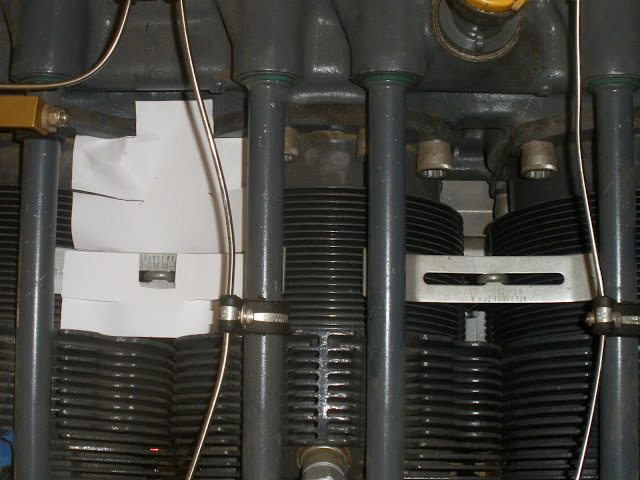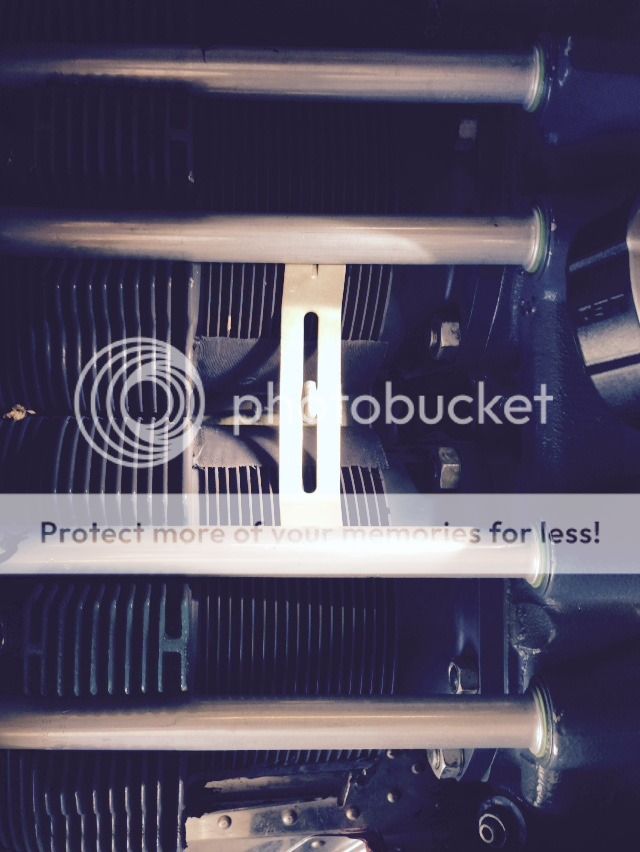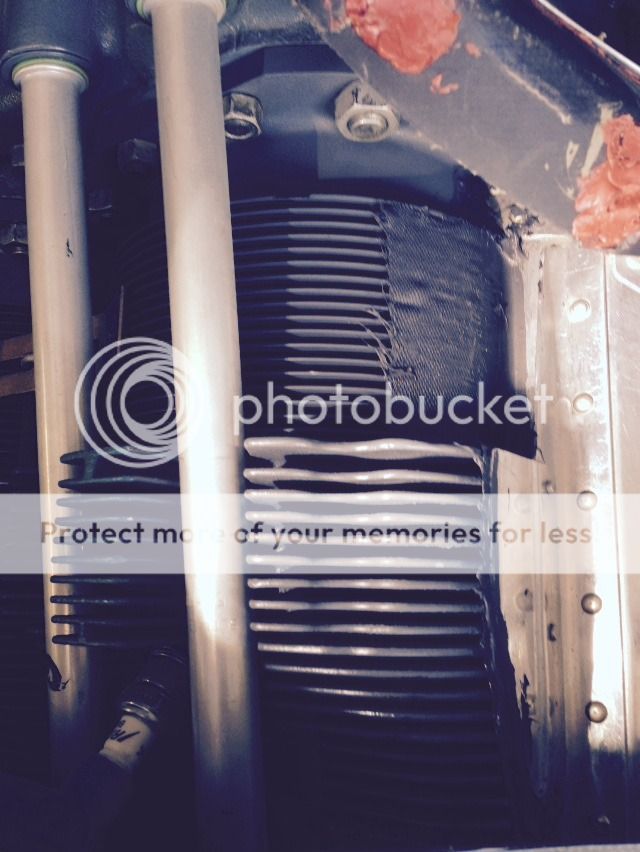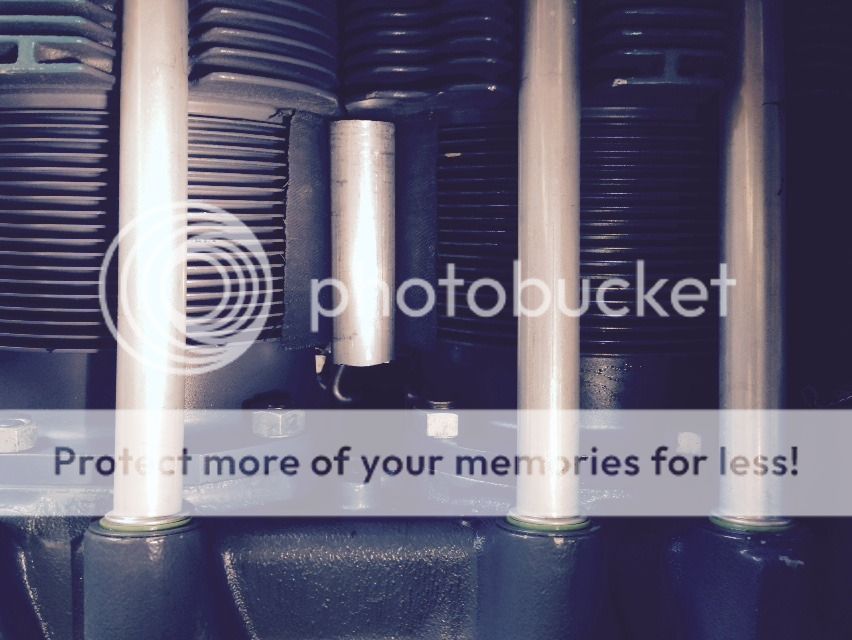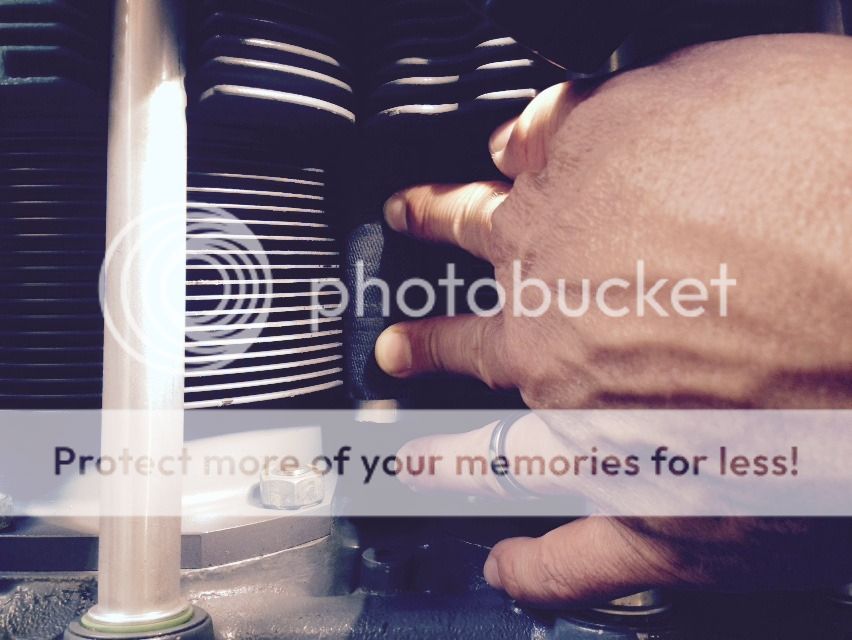Toobuilder
Well Known Member
I've been thinking a lot about cooling for the last few years and I'm convinced the standard intercylinder baffles are a target of opportunity for improvement. Understanding that they are "good enough", I can't help but look at all the evidence that supports other, more effective cooling schemes. Even the lowly VW Beetle has a more elaborate/extensive shrouding scheme. Compared to aircraft, air cooled cars have very little volume to work with, so they need to use all the fin area they can. That's what my research tells me, anyway.
So with the goal of being able to reduce the overall air moving through the Rocket's cowl AND still cool effectively, I removed the standard Lycoming parts and fabricated cylinder shrouds. Following NACA research, these shrouds are large in initial volume and shrink down to the fins toward the exit. I also fabricated blocker plates which prevent any (and I mean ANY) air from going anywhere other than through the fins on the cylinders or heads.




Pressed for time and unsure of the results, I decided to only do one half of the engine (cyls 2,4,6). Flight test revealed a significant increase in temps on all three of these cylinders, roughly proportional to their normal order of imbalance (ie. 2 coolest, 6 warmer, 4 warmest). Discouraging at first, but comparing the other side (1,3,5) to my normal baseline, these all ran significantly cooler. In retrospect, I should have seen this coming. Given the choice between the torturous path through the cooling fins on one side, the available air took the easy way out through the seive like qualities of the stock baffles.
So, with a bunch of flying coming up in the next few weeks, I have removed the modification and restored the stock baffles - albeit with some careful tweaking and sealing to ensure minimal leakage. Flight test has revealed my cooling is slightly better than normal. Rather than discouragement, I'm back to the drawing boards for a more elegant, optimized cylinder shroud system. Next time I'll do both sides and report the results.
So with the goal of being able to reduce the overall air moving through the Rocket's cowl AND still cool effectively, I removed the standard Lycoming parts and fabricated cylinder shrouds. Following NACA research, these shrouds are large in initial volume and shrink down to the fins toward the exit. I also fabricated blocker plates which prevent any (and I mean ANY) air from going anywhere other than through the fins on the cylinders or heads.




Pressed for time and unsure of the results, I decided to only do one half of the engine (cyls 2,4,6). Flight test revealed a significant increase in temps on all three of these cylinders, roughly proportional to their normal order of imbalance (ie. 2 coolest, 6 warmer, 4 warmest). Discouraging at first, but comparing the other side (1,3,5) to my normal baseline, these all ran significantly cooler. In retrospect, I should have seen this coming. Given the choice between the torturous path through the cooling fins on one side, the available air took the easy way out through the seive like qualities of the stock baffles.
So, with a bunch of flying coming up in the next few weeks, I have removed the modification and restored the stock baffles - albeit with some careful tweaking and sealing to ensure minimal leakage. Flight test has revealed my cooling is slightly better than normal. Rather than discouragement, I'm back to the drawing boards for a more elegant, optimized cylinder shroud system. Next time I'll do both sides and report the results.
Last edited:



